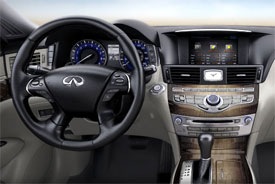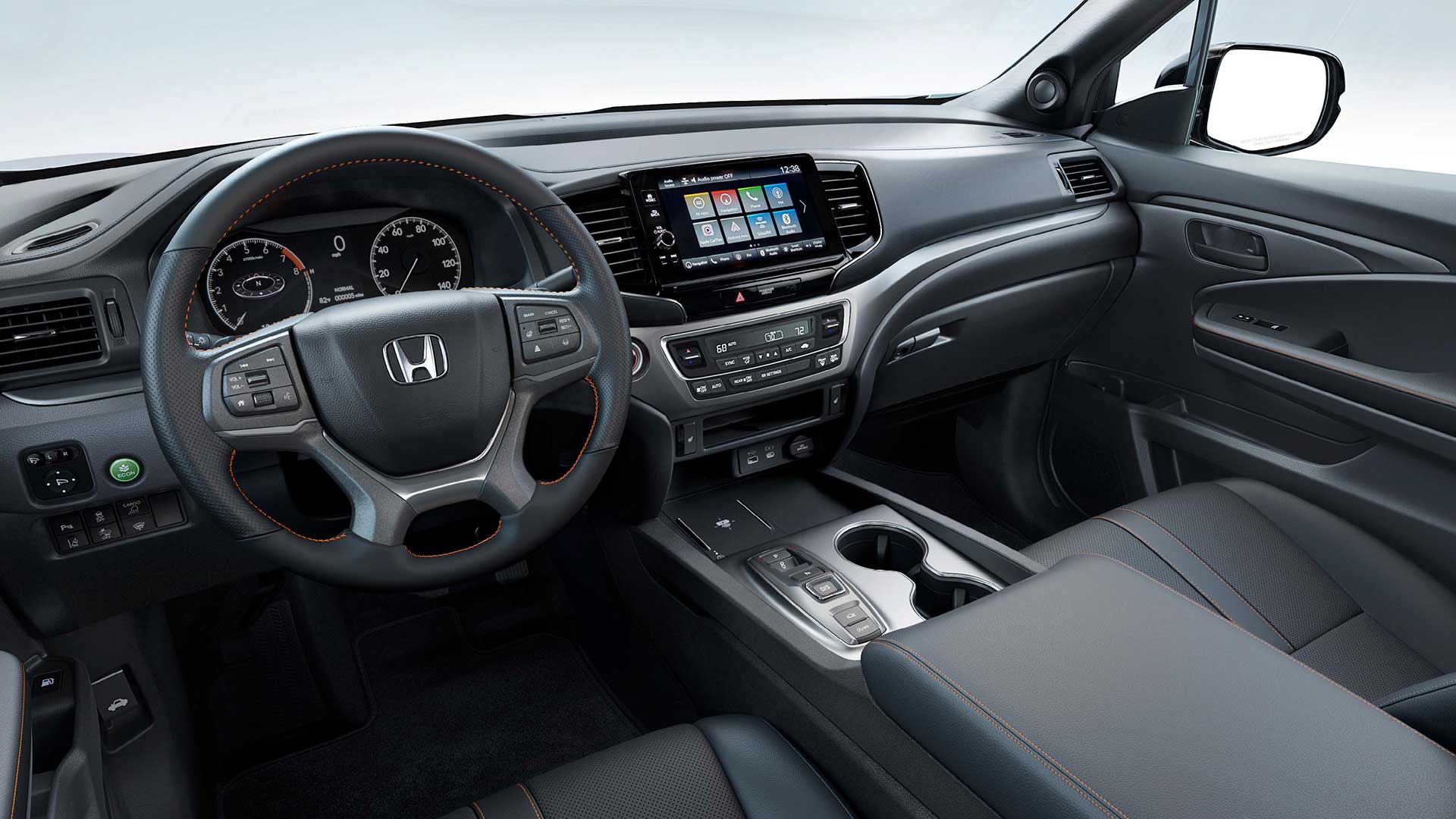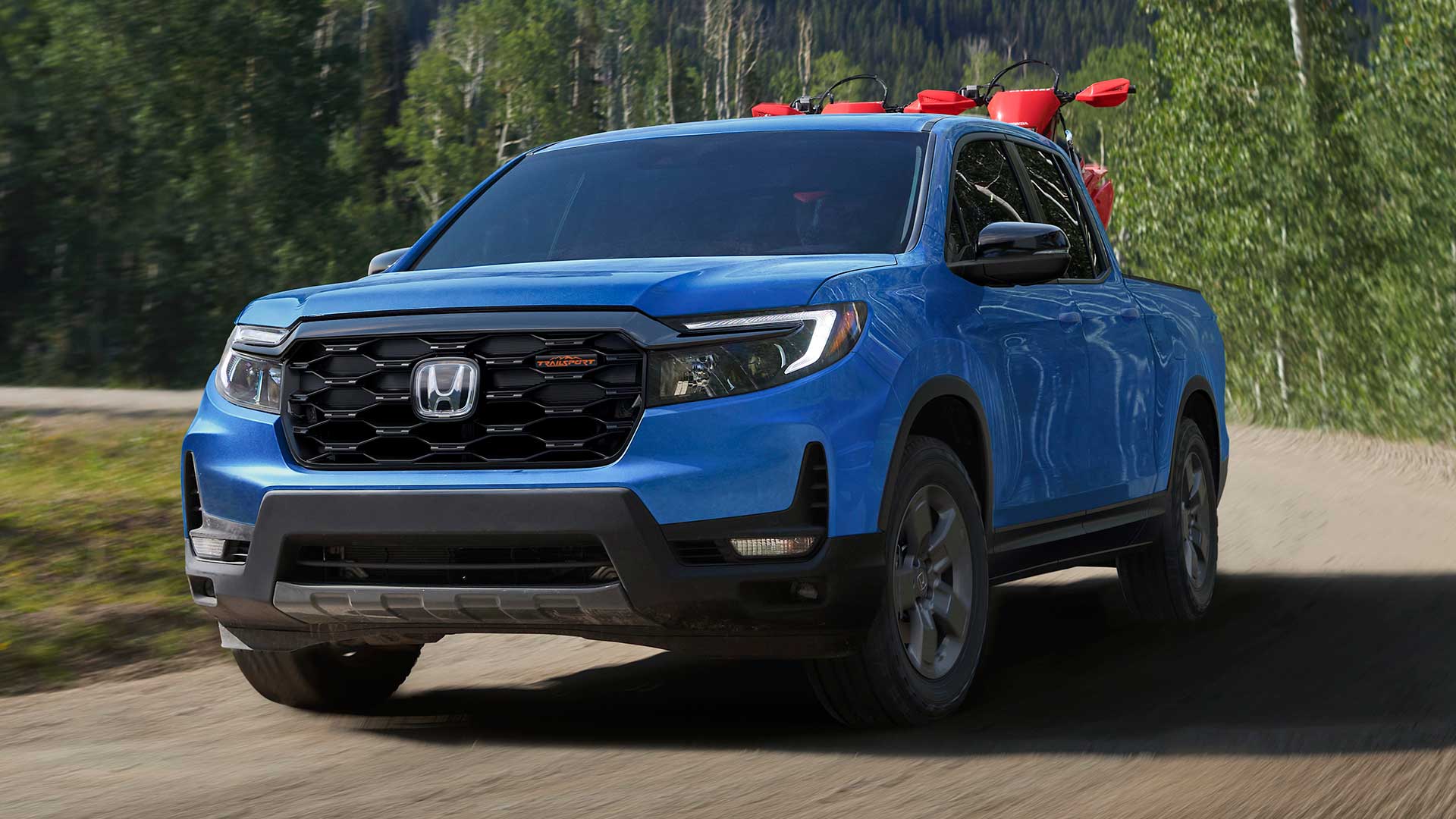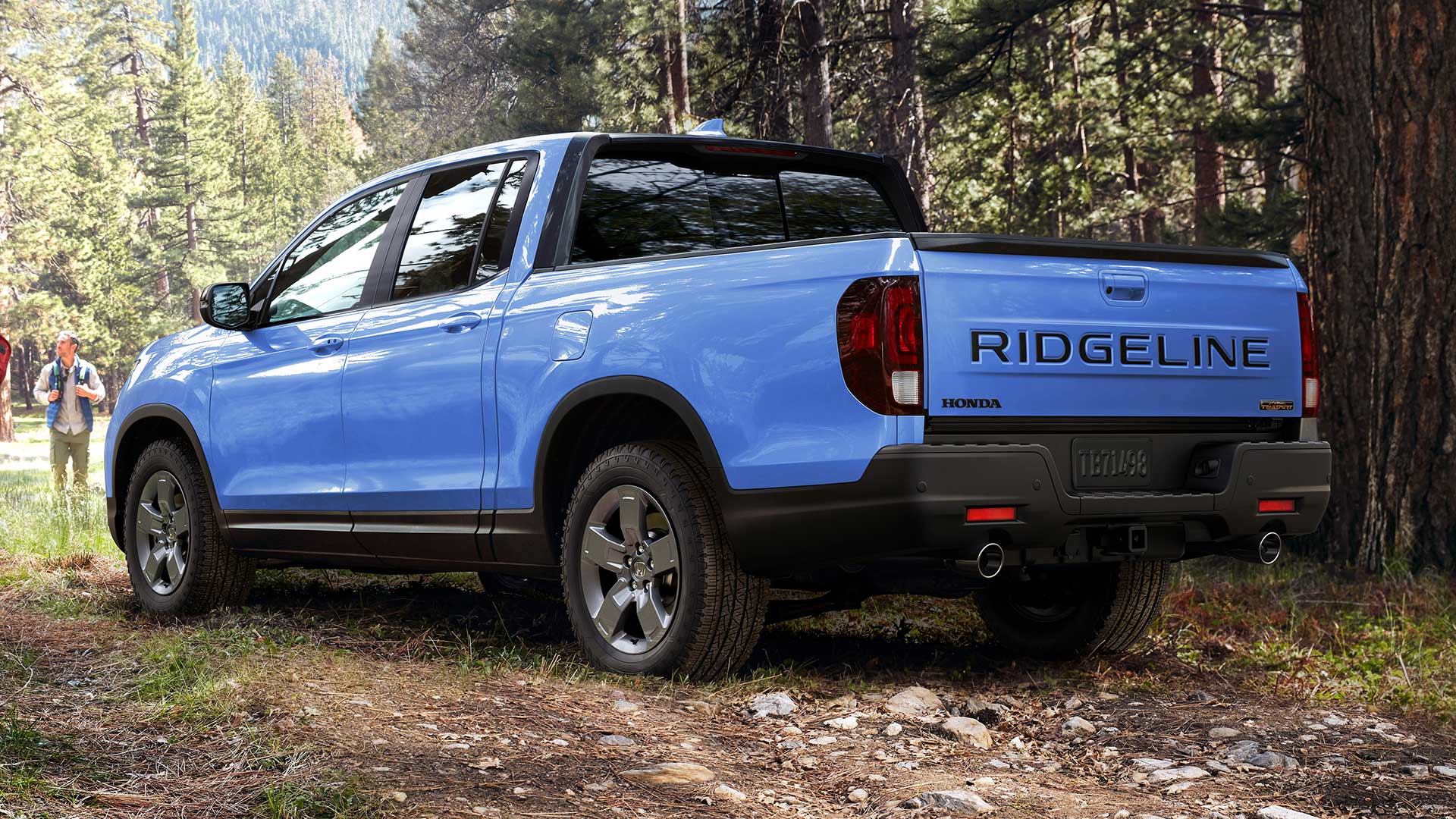2011 Infiniti M
Infiniti dealers have been begging for a new halo car ever since the ponderous Q-series was retired in 2006. While Infiniti had hoped the somewhat smaller M-series could play the part, it’s reviews as a showroom star have been lackluster at best. But now that may change. The M-series is again reborn, and it finally looks like it just might master the part. So let’s raise the curtain and see how it acts.
In Japan, it’s called the Nissan Fuga. Here in the States, it’s called the 2011 Infiniti M. Regardless of its badge, this redesigned, premium four-door sedan retains the swoopy, long hood, high rear deck form for which the M-Series is well known, but now adds sleeker design language to project a more expressive, upscale, and substantial image.
Wheelbase is unchanged, but the M-Series is now slightly longer, wider, and lower than before. A new low slung grille is flanked by swept-back crystal-look headlight clusters. The profile is defined by deeply sculpted fenders and flowing wave-style doors.
But the M’s brawniness comes from its chunky C-pillar area, which almost gives the car a jacked-up muscle car vibe, complete with sporty dual exhaust. Exhaling through those pipes are a pair of stronger engines. The M37 sports the G’s 3.7-liter V6. Horsepower is 330 – an increase of 27 over last year's 3.5 V6 - and torque is 270 pound-feet – up eight.
 The M56 uses a direct-injected 5.6-liter V8. About a quarter larger than the previous 4.5 V8, it rates 420 horsepower – a big jump of 95 – and 417 pound-feet of torque – up 81.
The M56 uses a direct-injected 5.6-liter V8. About a quarter larger than the previous 4.5 V8, it rates 420 horsepower – a big jump of 95 – and 417 pound-feet of torque – up 81.
The lone transmission is a seven-speed automatic with Adaptive Shift Control, feeding either the rear wheels or all four on "x" models.
Remarkably, even with a big boost in power, fuel efficiency is up too. Government Fuel Economy Ratings are 18/26 for the M37, and 16/25 for the M56. A new feature, Eco Pedal, provides feedback to encourage efficient driving. Infiniti claims a five-to-ten percent economy gain.
But a bigger increase comes in performance: the M feels much stronger. We judge the M56 to be capable of 0-60 in under 5.5 seconds. That puts it in the league of the Mercedes-Benz E550.
Still, after testing both engines, we found the V6 to be more than adequate for most buyers. With the V8, there's more power, but the front-end also felt heavier and less responsive. The new Drive Mode Selector adjusts throttle response and shift points to one of four settings; Standard. Eco, Sport, and Snow.
The front double-wishbone, rear multi-link FM chassis remains, but with a new back end geometry. The Sport Package, only offered with rear drive, brings tighter tuning with upgraded springs and new double piston shocks. It also adds Four-Wheel Active Steer for greater nimbleness. Infiniti's Intelligent all-wheel drive system is geared more for routine all-weather driving, unlike Audi's more performance-spec quattro setup.
Still, optional Active Trace Control, which adjusts engine torque and braking at all four wheels, does help to smooth out turn-ins. Brakes are enhanced, too, but only with the Sport Package, which brings larger rotors with four-piston calipers front, and two-piston rears. So, we judge overall dynamics to be both more sporty, yet still luxurious. Neither soft and Lexus-like or taut and BMW-like. Rather, the M is smack dab in the middle.
 The interior also benefits greatly from the M's new design language. It now looks like a top drawer sedan. From the twin-hump instrument shroud, to the stepped center console, the look and feel is both athletic and luxurious.
The interior also benefits greatly from the M's new design language. It now looks like a top drawer sedan. From the twin-hump instrument shroud, to the stepped center console, the look and feel is both athletic and luxurious.
The leather front seats have standard 10-way power, with optional heating and cooling. Sport Package brings added bolstering and a sport steering wheel with available heat. New comfort features include Active Noise Control, and Forest Air, which manages airflow and humidity to mimic a fresh breeze.
Higher-end options includes Navigation with satellite traffic and weather, a back-up camera, a 9.3 gig hard drive Music Box, and a Bose stereo. The rear seat is roomy for two adults, three in a pinch. The seats do not fold, but there is a pass-thru which leads back to a spacious 14.1-cubic foot trunk. For advanced safety technologies, the M offers Distance Control Assist, Intelligent Brake Assist, and Blind Spot Intervention. A world first, it uses selective braking to correct lane drift.
Pricing starts modestly for its class. $47,115 for the rear drive M37, $49,265 for the M37x. The M56 has a base of $58,415, while the M56x begins at $60,915. A V6 hybrid M is due for 2012.
While it still takes up little less pavement than most flagship sedans, the 2011 Infiniti M-Series gives up nothing in style, accommodations, or performance to rivals. The curtain is up, and Infiniti's new star is more than ready for a command performance.Specifications
- Engine: M37 3.7-Liter V6m56 5.6-Liter V8
- Horsepower: M37 330/m56 420
- Torque: M37 270/m56 417 Lb Feet
- 0-60 MPH: M56 5.5 Seconds
- EPA: M56 16 MPG City/ 25 MPG Highway
2024 Honda Ridgeline TrailSport
It Does Truck-Like Things Better Than Ever
Honda brought something truly unique to the pickup truck scene when their mid-size Ridgeline debuted for 2006. In 2017, it moved towards becoming a little more true truck-like, both in form and capability, now with yet another step in that direction for 2024. So, let’s see if the Ridgeline is really hitting its stride.
For 2024, it’s all about making this Honda Ridgeline better than ever. There are styling tweaks outside, along with tech and functional improvements inside, but the biggest news is the Ridgeline has now joined Honda’s TrailSport family of off-road inspired vehicles. This more-true-trucklike, second-gen Ridgeline been around since 2017, receiving periodic updates over the years; but joining the TrailSport family is the biggest leap yet.
Primarily, the TrailSport transformation includes General Grabber all-terrain tires, mounted on new Pewter Gray 18-inch wheels, steel underbody protection, and retuning the strut front, and multi-link rear suspension for added wheel articulation. And while we always appreciate the additional traction of off-road tires, the Ridgeline’s standard i-VTM4 all-wheel drive, with Intelligent Traction Management and snow, sand, and mud settings, was already quite capable of handling all but the most extreme off-roading, ground clearance of just 7.6 inches being it’s only real hinderance.
A 3.5-liter V6 remains under the hood as it has since the Ridgeline debuted for 2006; the current version outputs 280 horsepower and 262 lb-ft of torque, plenty enough muscle to handle its 5,000-lbs. towing capacity. A nine-speed automatic transmission with paddle shifters and bevy of push and pull buttons on the console replaced the six-speed automatic back in 2020.
In addition to adding TrailSport capability, a big focus for this update was making it more user-friendly inside, starting with the central touchscreen growing from 8 to 9 inches. It also gets faster processing speeds, menus have been simplified, and the native navigation system is improved with better graphics. It’s accompanied by a new digital instrument cluster, along with an upgraded center console with more storage space. Unique TrailSport touches include heavy duty floormats, leather-trimmed seats, orange stitching throughout the cabin, and orange ambient lighting.
The Ridgeline continues to offer things available nowhere else in the pickup truck market.
Exterior styling doesn’t exactly shout “macho big rig coming your way,” but the more vertical face and larger grille that arrived for 2021, along with this year’s added TrailSport elements, do continue to toughen up the Ridgeline’s image. The 5’4” bed remains highly functional with no large wheel well intrusions, multiple tie-downs points, lighting and even speakers. And of course, the Ridgeline continues to offer things available nowhere else in the pickup truck market, like the dual-action tailgate, and large, lockable, drainable, underbed storage. Not to mention being able to drive around in true car-like comfort, something we took full advantage of on our way to our Mason Dixon Dragway test track.
There was great grip off the line, with full power arriving smoothly but quickly, helping us to get to 60 in 7.0 seconds flat, a tenth quicker than the last Ridgeline we tested. That power delivery stayed fairly consistent the whole way down the track, barely interrupted by the nine-speed automatic’s smooth shifting. Our best quarter-mile run was 15.5 seconds at 90 mph.

The revised suspension and knobbier tires didn’t really seem to add or detract from handling prowess, as it felt as solid, nimble, and car-like as it always has through our cone course. Perhaps a little less stiff than before, but good feedback, tight steering, and minimal body roll for a pickup, made for a very confidence inspiring experience. In our braking test, we stopped in a respectable average of 123 feet from 60, with only moderate amounts of nosedive and good feel through the pedal.
There is, however, a slight reduction in Government Fuel Economy Ratings with the all-terrain tires; 18-City, 23-Highway, and 20-Combined, our average, right on, at 20.4 mpg of Regular. That’s a slightly below average Energy Impact Score of 14.9 barrels of yearly oil use, with CO2 emissions of 7.4 tons.
TrailSport pricing falls in line just under the Ridgeline’s top Black Edition trim with a starting price of $46,375, about five grand over a base Ridgeline Sport.
So, whether you consider the Honda Ridgeline to be a “real” truck or not, this ruggedly smooth 2024 TrailSport does truck-like things better than ever. And we’re not just talking about the slight upgrade in off-road performance, we’re talking about a flexible bed to help you get chores done, and the ability to tow or haul with comfort and flexibility other trucks can only wish for. It’s why the Ridgeline brings more first-time buyers to Honda than any other vehicle, and why it continues to be a great choice in the growing midsize truck realm.
Specifications
- Engine: 3.5-liter V6
- Transmission: 9-speed automatic
- Horsepower: 280
- Torque: 262 lb-ft
- EPA: 18 City | 23 Highway | 20 Combined
- 0-60 mph: 7.0 seconds
- 1/4 Mile: 15.5 seconds at 90 mph
- 60-0 Braking (avg): 123 feet
- MW Fuel Economy: 20.4 mpg (Regular)
- Max Towing Capacity: 5,000-lbs









